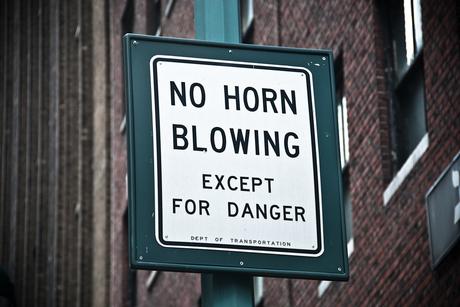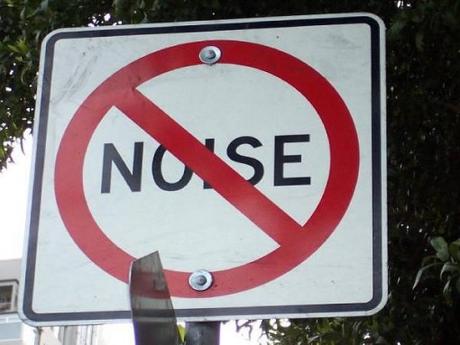Noise pollution refers to an undesirable sound or sound which generates horrible discomfort on the ears. It is measured in decibels (dB) and sound levels beyond 100 dB can cause permanent hearing loss. Noise pollution is a huge problem because it creates discomfort, interferes with an individual’s peace of mind and lessens one’s quality of life. For instance, noise can disrupt sleep and prevent one from getting a rejuvenating rest due to the high sound vibrations.
Noise pollution also affects marine and wildlife animals at the same degree it affects humans. These days, noise is almost everywhere especially in urban and city areas influenced by transportation activities such as airports, traffic and railroads, industrial manufacturing, construction works, and concerts. However, there are numerous practical ways to reduce noise pollution. Here are various easy steps we can take to reduce noise pollution.

- Close the windows. By simply closing the windows, we can reduce the amount of noise entering into our homes and buildings. It keeps away unwanted sound. The best thing to do is to only open windows during the quitter times of the day, most probably late in the evenings.
- Put on earplugs. Wearing earplugs is a cost-effective solution of reducing noise pollution. A pair of earplugs can be worn while sleeping or at any other time of the day when you want to reduce the amount of noise hitting your eardrums. Earplugs have their health benefits especially for those who want to have a healthy sleeping habit in noisy areas.
- Improve your insulation. Insulation measures are some of the basic and most practical ways to reduce noise pollution at home. It’s an art of soundproofing which helps in blocking the sound vibrations and noise. By improving insulation it means installing soundproofing materials on the walls, ceiling and even on the floor. The use of double-pane windows can also aid in absorbing noise.
- Invest in noise-canceling headphones. Majority of people may not realize this, but sound-cancelling headphones are good for reducing noise pollution. It’s essentially important for industrial and construction workers. The noise cancelling headphones filters the unwanted noise before it reaches the ears.
- Do wall-to-wall carpeting. Wall-to-wall carpeting comes in as another simple and practical way of reducing noise pollution. Such an undertaking goes a long way in reducing incoming noise into our homes or offices.
- Install a fence. This may sound extreme, but it qualifies as a practical way to reduce noise pollution. Noise is produced by strong sound waves or vibrations which can be significantly reduced by barriers. By installing a fence, you’ll be creating a barrier that absorbs the strong sound waves or vibrations thereby reducing noise pollution around your office or home.
- Be creative with the office or house layout. One way to reduce noise in the house or in an office setting is getting innovative with the general layout. For instance, noisy machines can be situated in areas that are not close to the sitting/resting or working areas.
- Invest in noise friendly flooring. Floors can offer impressive ways of reducing noise pollution. However, it depends on the type of floor in place. Carpeting for instance usually reduces substantial amount of noise but better results can be achieved by use of noise friendly flooring like vinyl. Vinyl is a resourceful alternative to carpeting and delivers better in reducing noise pollution because of its sound absorption qualities.
- Invest in sound friendly furniture. Furniture are great sound absorbers as they reduce echo and sound vibrations. Therefore, sound friendly lounge chairs, bookshelves, couches and cabinets can have an effect on the acoustics of open spaces. For instance, in case of a noisy neighbor, put a big bookshelf against the wall to reduce the noise coming from their house or building.
- Use of modern acoustic wall panels. Not all wall panels incredibly serve well at reducing noise pollution. Because of technological advancements, there are modern designs acoustic wall panel options available in the market that can effectively reduce noise pollution.
- Turn off the electronic or reduce the volume. Game systems, computers, Hi-fi systems, and televisions can contribute to noise pollution when on high volumes. The solution is to turn them off when not in use and also keep them on moderate volume to reduce noise pollution. Besides, by turning them off you’ll also be saving electricity costs.
- Plant trees. Trees have been established to be effective in reducing noise levels within urban settings, around major highways, and even at the places we stay. Therefore, numerous plants and trees in an area mean less noise pollution. In addition to that, trees have various aesthetic advantages and improve air quality.
- Have a dedicated quiet space. Having a dedicated quite space can pay off whenever we want to escape the noises that make us uncomfortable and reduce the quality of life. Quite spaces can guarantee as much as 100% soundproof areas.
- Install cubicles and wall partitions. In places with large free space such as offices and other big rooms at home, wall partitioning and the use of cubicles will reduce the overall indoor noise. Cubicles and wall partitions act as noise absorbers and prove very effective even with low-level installation.

- Shut the door. Shutting the door keeps away unpleasant sounds especially if you have noisy neighbors. If there are appliances that produce loud noise such as dishwashers, blenders and washing machines, you can have them run in separate rooms and shut the door to seal off the noise.
- Cancel or mask the noise. Canceling or masking the noise is one of the simplest and practical techniques of reducing noise pollution. It is achieved through the creation of peaceful sounds to cancel the awful ones. It can simply be done by turning on a fan or hanging wind chimes. For the majority of people, it may seem contradictory but it is a proven effective method of masking or canceling the horrible and bothering sounds. Furthermore, there are white noise machines that can make the canceling or masking easier.
- Move or choose a home in noise-free areas. Moving away from noisy areas can also qualify as a practical way of reducing noise pollution. It may sound extreme but moving from areas such as airports, train stations, industrial districts and major highways can reduce noise levels greatly.
- Replacement of old automobiles with new ones. Old automobiles are a major source of noise pollution. They create unappealing and very loud sounds. Their replacement with new ones will go a long way in reducing noise pollution. It will also lessen the emission of soot and toxic substances into the atmosphere.
- Creating awareness and education on the consequences of noise pollution. The creation of awareness on noise pollution and its effects on both humans and wildlife can generate positive outcomes on efforts to reduce noise pollution. Perhaps if most people could be aware that noise pollution can lead to hearing loss and mental stress, then majority will invest in ways to reduce noise pollution.
- Declaring a “no horn zone” in hospital, school and residential areas. Horns from trucks, buses and cars produce considerable degree of noise pollution and as such, the introduction of no horn zone can help reduce noise pollution in hospital, school and residential areas.
- Let’s all be good neighbors. By being a good neighbor, it means maintaining awareness of your loud music, barking dogs or loud parties among others. Keeping these on check can make your neighbor do the same which eventually contributes to an easy and practical way of reducing noise pollution.
- Put pressure on the relevant city or governing authorities to introduce noise regulation policies. Governing and city authorities are highly placed at introducing policies which can help reduce noise pollution. The laws should limit the amount of noise in public and private places to reduce noise pollution. The policies can also be integrated in transportation network construction and activities such as low-noise road surfaces, low-noise tracks, redesigning street spaces, enforcing speed limits and reducing traffic volume.
- The use of calming green waves. These are the highway and noisy areas (such as airports, train stations and industries) sound insulation measures that can help absorb the huge sounds produced by the operating machines.

